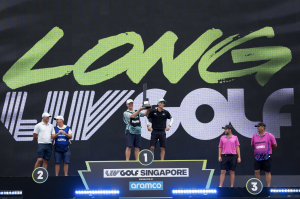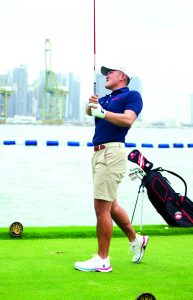A RACE LIKE NO OTHER
Join us as we take a front row seat at Le Mans, one of the greatest races in the world, followed by an exclusive tour of Ferrari’s automated factory in Maranello, Italy.
One of the fantastic things about working for a magazine like Portfolio is the once-in-a-lifetime opportunities the publication can sometimes bring about. For instance, a little over a month ago, my editor asked if I was able to travel on short notice, which I was. Later, he informed me that I’d be travelling to France as a guest of Ferrari to see the world famous Le Mans motorcar race. Not only that, after the race, Ferrari had also invited a group of us to visit their new advanced automated factory in Maranello, Italy. Scratch two items off the bucket list!
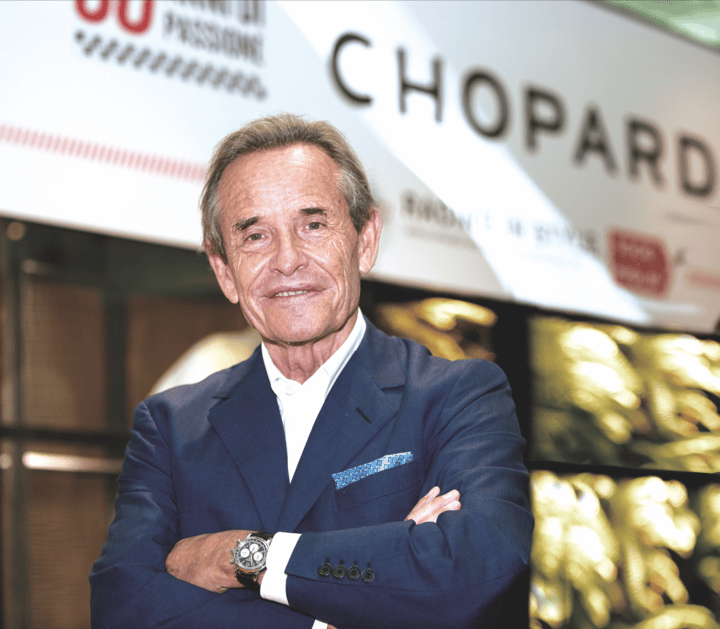
Racing legend Jacky Ickx
Most people have heard at least something about the Le Mans race. American actor and avid racing fanatic, Steve McQueen, made an action racing film in 1971 called, appropriately enough, “Le Mans.” Still, if you don’t know much about the race, it’s a 24-Hour automobile contest unlike any other.
The winner of this race is the car that covers the greatest distance in 24 hours. It’s the ultimate endurance test of both man and machine. Each year, more than 250,000 enthusiastic spectators flock to the Circuit de la Sarthe racetrack located in the outskirts of the small French town of Le Mans for the day long race. The circuit incorporates the main racetrack and extends into surrounding roads creating a 13.626 km circuit, something like Singapore’s F1 race.
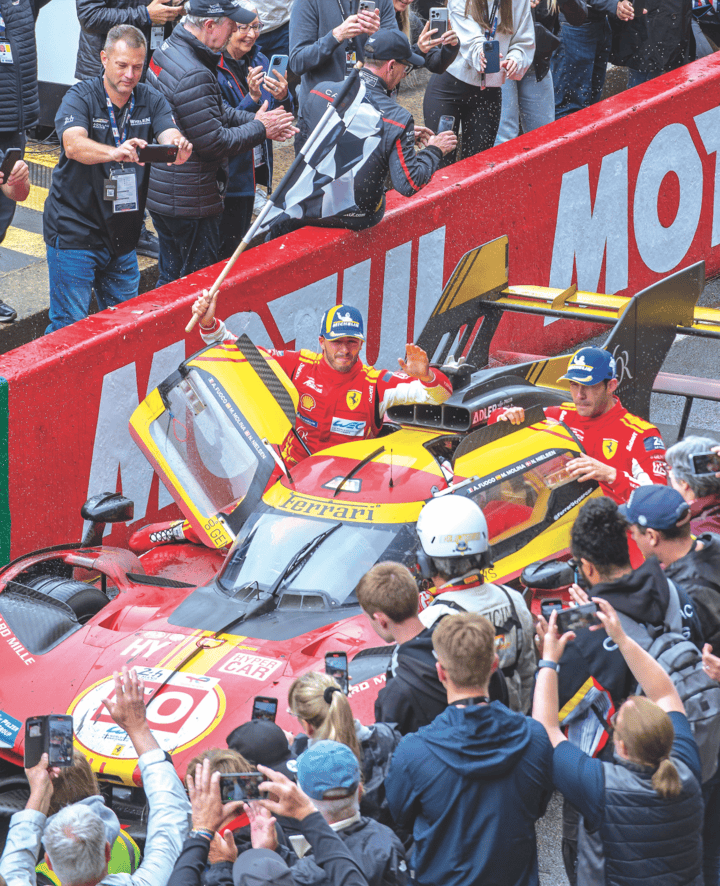
Originally started in 1923, the extreme endurance race was created to test the durability of materials and showcase innovative new automotive technologies.
To be a winner here, you need more than just a dependable, powerful car and the best drivers. According to racing legend and Le Mans six-time winner Jacky Ickx, “The team: Drivers, mechanics, and crew have to start working together closely months before the race.”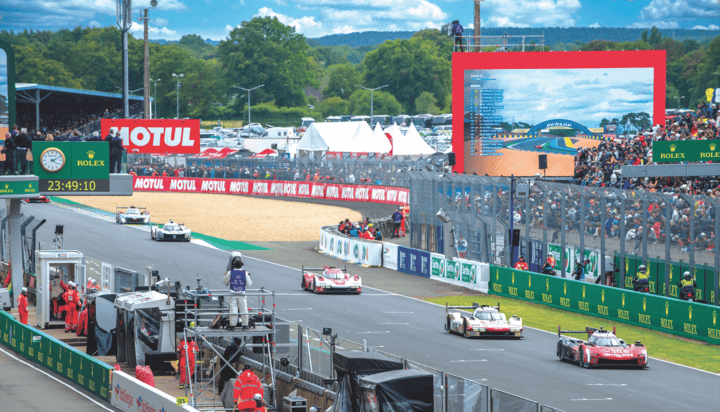 The race itself is made up from a team of several drivers, not just a single person at the steering wheel. As you might imagine, the Le Mans circuit pushes drivers to the limit. “Le Mans is exhausting even with a change of drivers,” Ickx reveals.
The race itself is made up from a team of several drivers, not just a single person at the steering wheel. As you might imagine, the Le Mans circuit pushes drivers to the limit. “Le Mans is exhausting even with a change of drivers,” Ickx reveals.
Another incredible feature of this race is that drivers almost always push their cars at full throttle. Perhaps it’s a result of being chased, challenged by some 62 or more other cars on the raceway. On every lap, drivers often reach 300 km/h four- or five-times day and night. Those at the wheel can’t relax and are always looking for the best position and speed. What’s more, they must keep a lookout for both weather and road conditions. In the six-kilometer Mulsanne Straight, a stretch of road is interrupted by two chicanes or sharp curves, where drivers can reach speeds in excess of 405 km/h.
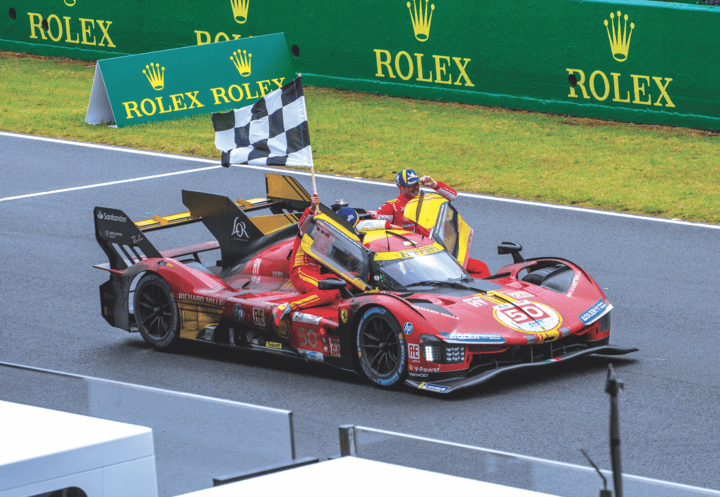 As fortune would have it, this year’s race was won by Ferrari. It was close, however. The team from Toyota were in the lead almost to the finish thanks to the time they gained by not switching tires when it rained. However, Ferrari’s car, tactics, and diving proved to be superior and they took the winning title.
As fortune would have it, this year’s race was won by Ferrari. It was close, however. The team from Toyota were in the lead almost to the finish thanks to the time they gained by not switching tires when it rained. However, Ferrari’s car, tactics, and diving proved to be superior and they took the winning title.
It was pioneer race car builders like Enzo Ferrari who first championed the Le Mans contest. Enzo didn’t care about selling cars; his passion was racing. It’s famously reported that he told Henry Ford II, “Isell cars so that I can race, you race so you can sell more cars.”
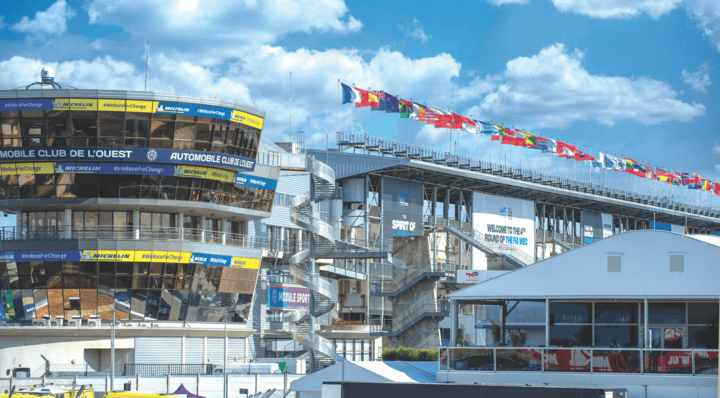 After the Le Mans win, we triumphantly flew off to Italy. The excitement at the massive Ferrari factory in Maranello was palpable. The whole town is Ferrari centric with restaurants and shops proudly displaying the Ferrari prancing horse at their establishments.
After the Le Mans win, we triumphantly flew off to Italy. The excitement at the massive Ferrari factory in Maranello was palpable. The whole town is Ferrari centric with restaurants and shops proudly displaying the Ferrari prancing horse at their establishments.
Ferrari sells only about 15,000 cars a year and has just about that many employees world-wide. To meet with the rising demand of its cars (you now have to wait two years for a new Ferrari) and to give Ferrari more flexibility in manufacturing, the company has opened a new sustainability-focused production plant at its Maranello headquarters. To reduce its carbon footprint, the factory has over 3,000 solar panels on its rooftop. In the 42,500 square meter “e-Building,” the luxury sports car manufacturer will build its first ever electric car, as well as other vehicles with combustion engines and hybrid drives.
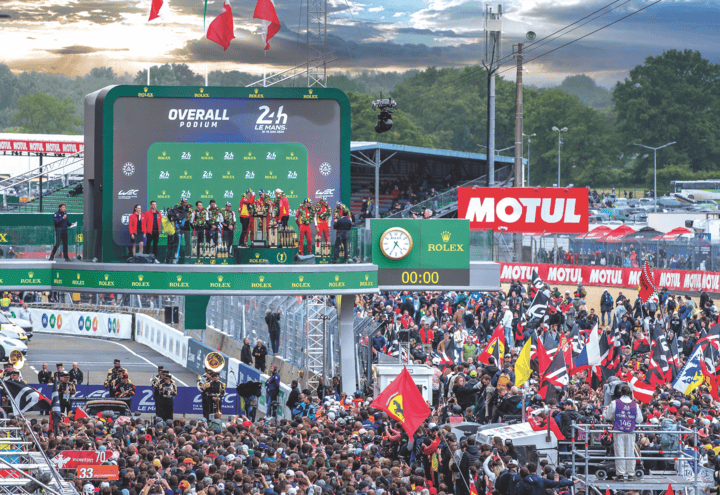 The factory is done up in gleaming white and stainless steel and looks, more like a futuristic hospital operating room than a car production facility. The new site uses a host of advanced robots to move, assemble, and check vehicles on the production line.
The factory is done up in gleaming white and stainless steel and looks, more like a futuristic hospital operating room than a car production facility. The new site uses a host of advanced robots to move, assemble, and check vehicles on the production line.
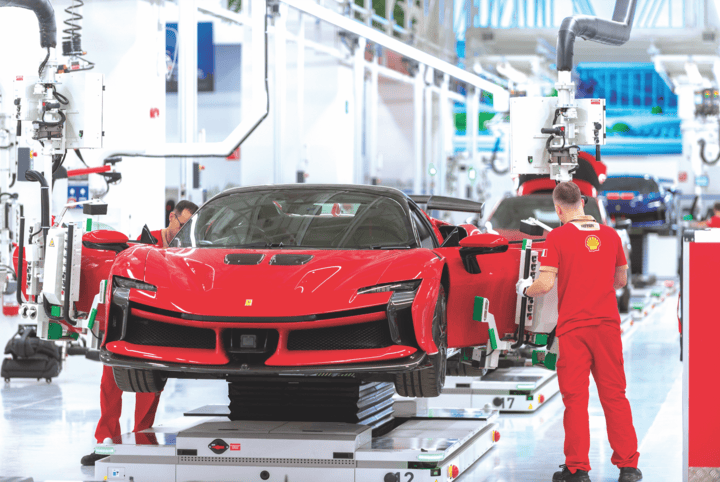
Besides a factory run by robots, there is another area in the Ferrari factory complex that offers a rather unique and special service. “Ferrari Classiche” provides owners with a Certificate of Authenticity, and this is only available in Maranello. The Certificate of Authenticity is for all Ferrari road cars over 20 years old and is also available for Ferrari F1, Sportscars, and Sport-Prototypes, with no restrictions on the age of the car. So, if you buy a previously owned Ferrari and don’t know its history or even if it’s authentic, this is where Ferrari Classiche can help.
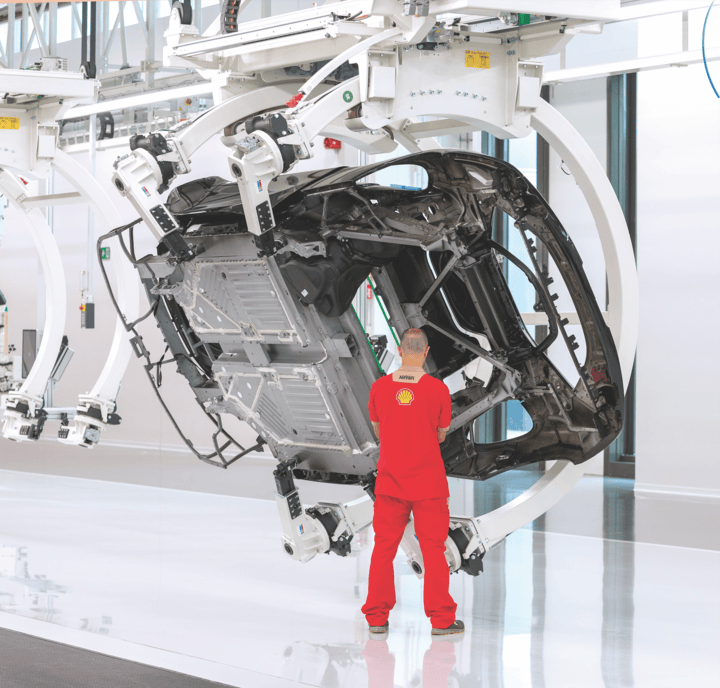
Enzo Ferrari was a stickler for details and he saw to it that the company kept and archived all blueprints for his cars produced since 1947. Need, a new engine block? No problem, Ferrari can cast one and reproduce it from the original drawings. And thanks to the detailed drawings, Ferrari Classiche can restore any Ferrari to almost original condition. The full benefits of the Certificate of Authenticity is obvious: In addition to protecting the priceless heritage of a historic car, the Certificate increases sale value, while giving access to the most prestigious official events organised by the Prancing Horse.
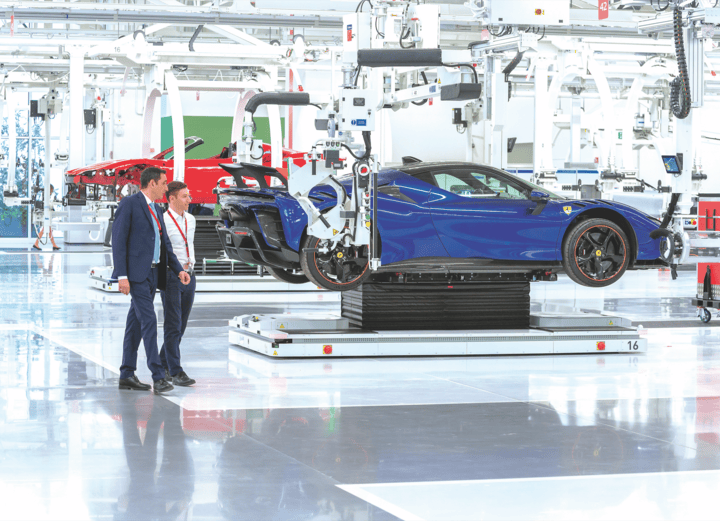
On our last day we attended a Ferrari press conference in the new building. When asked if electric cars are the future, Ferrari CEO, Benedetto Vigna, a physics graduate who has spent the last 26 years at chip maker STMicroelectronics, says he’s not sure. When a reporter reminded Vigna that Europe had mandated that EVs will be the only choice by 2035, his response was, “Then Europe has to change its mind… and wake up.”
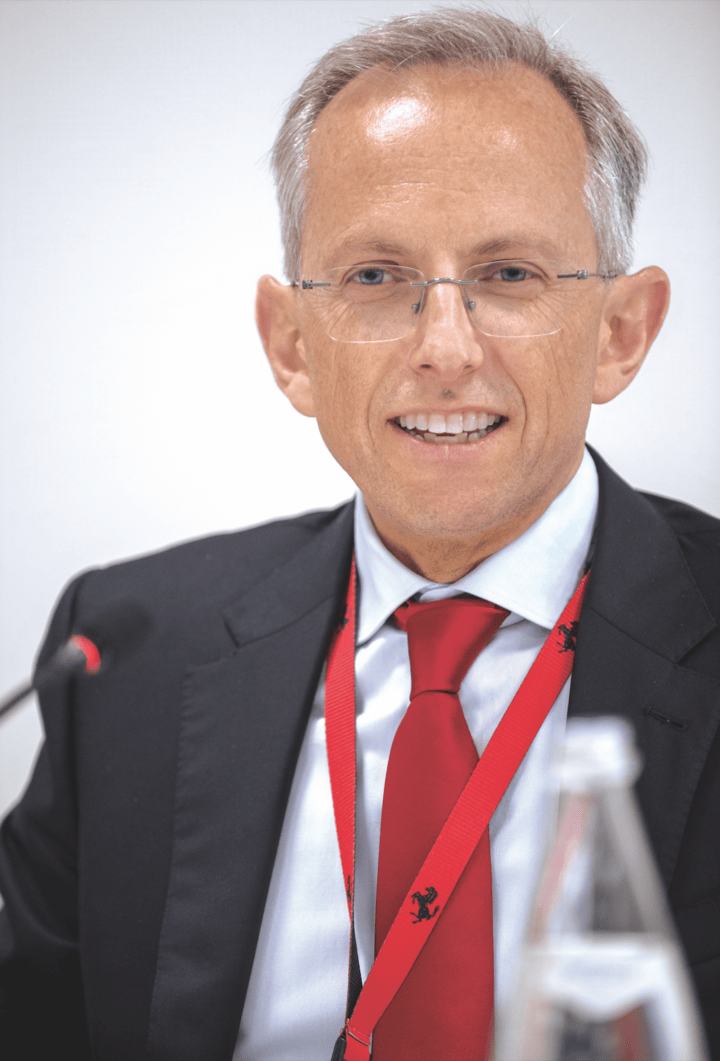
Benedetto Vigna, CEO, Ferrari
The Ferrari CEO believes that it will be a variety of power sources that will drive vehicles in the future, including electric and perhaps hydrogen. “We will build EVs as long our customers want them,” he said. Ferrari is set to sell its first EV in 2025, which will be a radical departure for a company that was founded on the roar, sophistication, and power of its petrol engines. Still, I think Enzo Ferrari would be proud as his company still maintains a passion for racing, whether it be electric, or petrol powered. In the end, it’s all about the race

